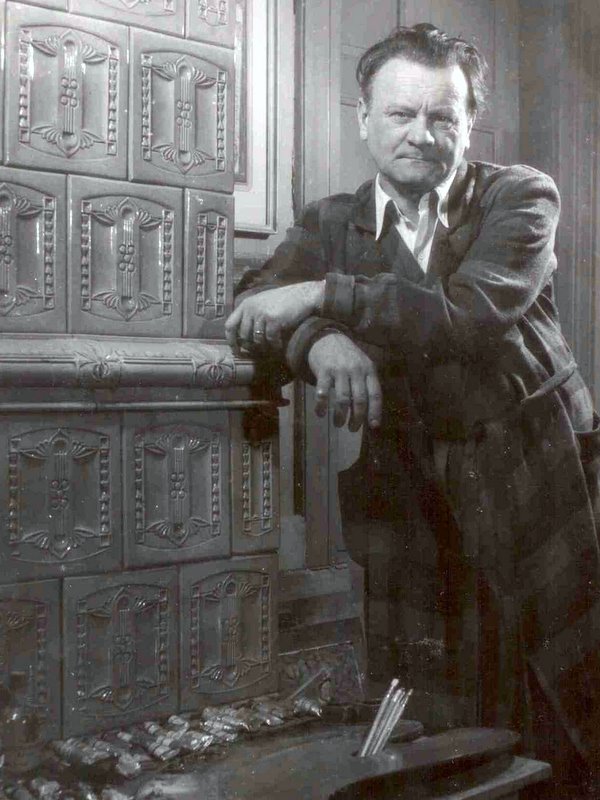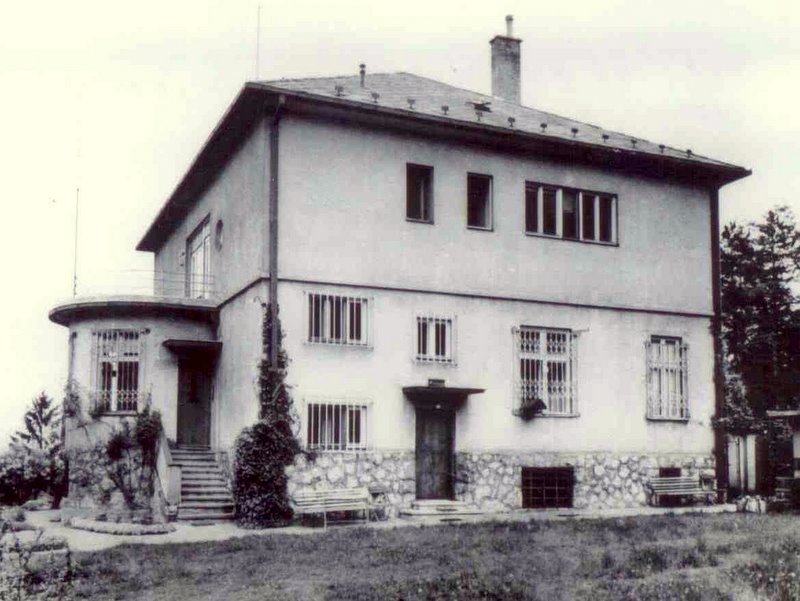M. A. Bazovský
 Miloš Alexander Bazovsky belongs to the most famous and outstandning personalities of the Slovak painting of 20th century. His work was thematically connected with Slovakia and by its expression it was orientated on wider European context. It contributed to the formation of modern Slovak art.
Miloš Alexander Bazovsky belongs to the most famous and outstandning personalities of the Slovak painting of 20th century. His work was thematically connected with Slovakia and by its expression it was orientated on wider European context. It contributed to the formation of modern Slovak art.Miloš Alexander Bazovský was born on 11th January 1899 in Turany nad Váhom, Slovakia, in a family of a teacher. The beginnings of his painting are connected with his studies at The Academy of Fine Arts in Prague /1919-1924 Professors Loukota, Bukovac, Pirner, Obrovský and Švabinský /. After finishing his studies he returned back to his native Turany and later he moved to Martin, Central Slovakia /1931/. The surrounding was very rich in visual stimulation and the painter drew and painted landscapes tirelessly. Continuously he was changing his realistic and impressive way of painting into more abstractive and generalizing shapes and definitions of the reality. From 1929 to 1933 he cooperated with Janko Alexy and Zolo Palugyay - famous painters. These versatile painters spent prolific periods together looking for themes for their pictures, discovering distinctive areas of Slovakia and organising travelling expositions.
Like his friends, Bazovský was getting to know, like and understand Benka`s monumental way of painting. But Bazovsky`s expression is more emotional and less folkloric. The period of his career from 1934 to 1937 was called the period of "lyrical counterpoint" by Karol Vaculik, his monographist. His paintings were getting more emotional and a new scale of brighter and more courageous colours appeared /yellow, green, orange, violet and pink/.
His paintings created in 1938 opened a period characterised by Vaculik as "the assumption to synthesis".His previous concentration on the formal side of his paintings was continuously replaced by his concentration on the content and expression. In the thematic level he depicted the countryside and people of Slovakia using a natural style of painting without any redundant pathos or drama. For a short time the tragedy of the war years and the urban periphery were being shown in his pictures. From 1944 to 1946 he was not painting. This "dumb" period of his career was a result of his illness. In the following period he rediscovered the beauty of the Slovak countryside - especially its region Orava, and he reflects the harmony between a man and the life around him. His still lifes express how much the painter admired everyday subjects. In this period of his work drawings, which had been typical for his work since the beginnings, became interest-focused. Bazovský drew tirelessly and systematically using a pencil, Indian ink, pastel chalk, charcoal or sepia and depicting the basis of all his motifs with his virtuosity as a painter.
 At the beginning of the fiftieth of 20th century despite the difficult political, social and cultural climate and his personal financial problems, he carried on working and his last landscapes and still-lifes are real masterpieces with a surrealistic undertone. His last paintings reflect the basic philosophical and etical ideas of the painter. His work was concluded on 15th December 1968. He is buried in Trenčín, Slovakia. The contribution and importance of the work of M.A. Bazovský has been featured in many exhibitions /the first one in 1921/ in Slovakia and abroad as well. His paintings are included in many collections of almost all galleries throughout Slovakia and in many private collections in Slovakia and abroad. M.A.Bazovský`s Gallery in Trenčín houses the largest collection of his paintings, drawings along with much of his correspondence and manuscripts. The stationary exhibition was opened in 1979.
At the beginning of the fiftieth of 20th century despite the difficult political, social and cultural climate and his personal financial problems, he carried on working and his last landscapes and still-lifes are real masterpieces with a surrealistic undertone. His last paintings reflect the basic philosophical and etical ideas of the painter. His work was concluded on 15th December 1968. He is buried in Trenčín, Slovakia. The contribution and importance of the work of M.A. Bazovský has been featured in many exhibitions /the first one in 1921/ in Slovakia and abroad as well. His paintings are included in many collections of almost all galleries throughout Slovakia and in many private collections in Slovakia and abroad. M.A.Bazovský`s Gallery in Trenčín houses the largest collection of his paintings, drawings along with much of his correspondence and manuscripts. The stationary exhibition was opened in 1979.


